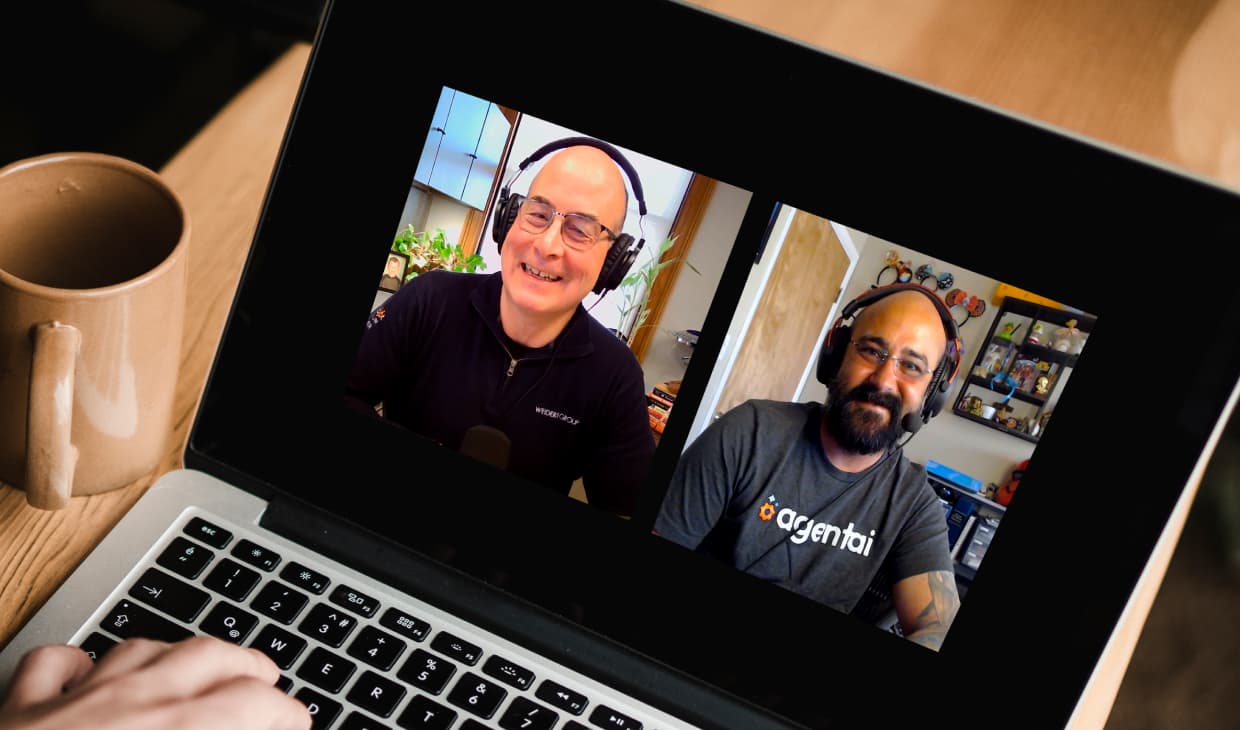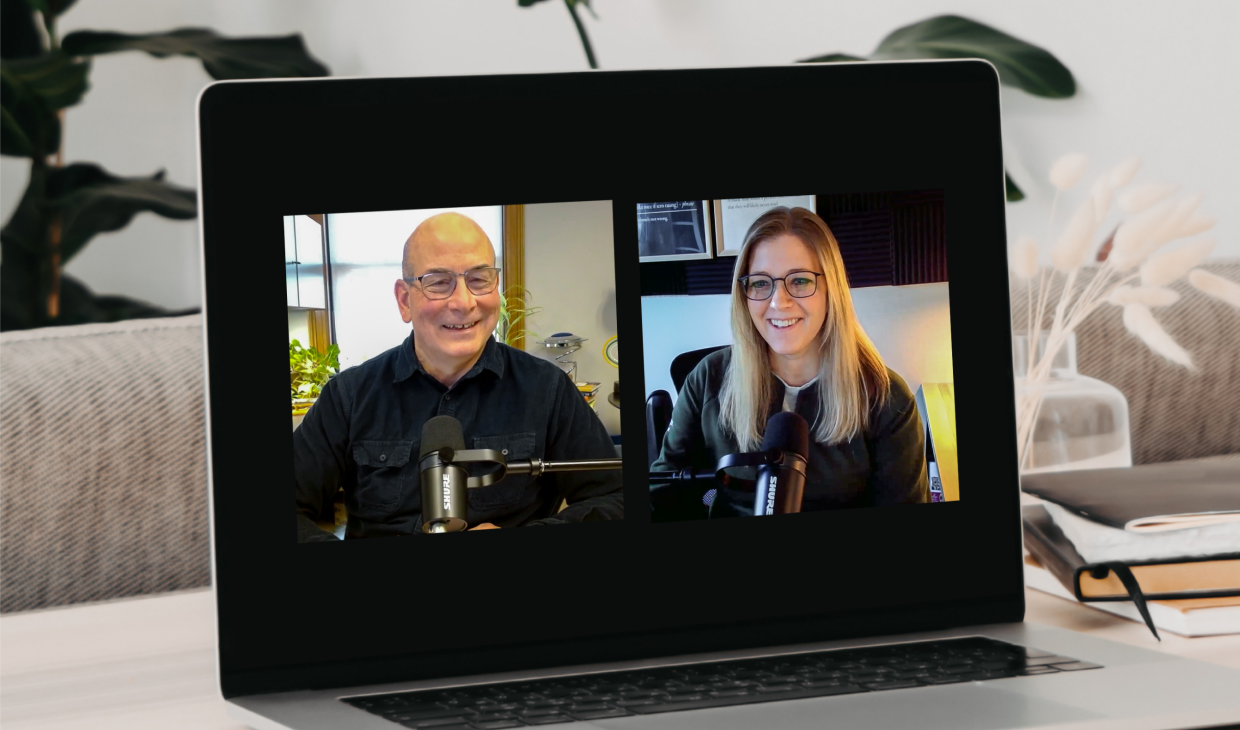Strategic Restraint: Andy Crestodina’s Advice for Revenue-Driving Marketing Content
Written by
Spend a minute on LinkedIn, and you’ll come across scores of self-labeled content experts claiming to have insights into the next big “hack.” It’s easy to find conflicting claims and advice — yet rare to find insights that are innovative, yet grounded in proven fundamentals (as opposed to hype).
Which is exactly why I felt so fortunate to snag an hour of Andy Crestodina’s time to talk content strategy on The ChangeOver Podcast. Andy’s been immersed in digital marketing since 2001, and he literally wrote the book on content marketing: Content Chemistry, now in its seventh edition, should be foundational reading for every content marketer.
If you attended Experience Inbound in 2024, you certainly remember Andy’s keynote, in which he challenged content creators to think about AI in terms beyond efficiency and productivity, and instead recognize new ways to create better, more differentiated marketing content that stands out and drives results.
No surprise, talking shop with Andy is like tapping a motherlode — so you’re getting a two-part podcast covering a wide range of top-of-mind questions and challenges content marketers face right now. In this article I’m sharing key insights from part one of our conversation.
But rather than read my take, why not listen for yourself, so you can hear directly from Andy as he breaks down his approach to strategic content allocation, the evolution of the blog, and how to create high-value content with limited resources.
Check out episode 19 of The ChangeOver now, then subscribe on Apple, YouTube, Spotify, Weidert.com, or your favorite podcast app.
Content Strategy: The Math of Resource Allocation
Our conversation revealed a sophisticated approach to content planning that I'd characterize as strategic content allocation — treating your limited marketing resources as investments that should be deployed based on proximity to revenue. As a content strategist myself, this approach demands strong alignment between B2B marketing and sales teams.
Content is a marathon and a lot of brands just don’t have the horsepower in-house to produce a steady stream of weekly articles and videos… So I think a good beginning for an industrial brand is to analyze who’s in your pipeline right now — your sales pipeline.
Andy’s advice on execution is refreshingly practical. He recommends creating content specifically designed for prospects already in your sales pipeline — for example, developing materials that can be used in nurture sequences for proposals that have gone cold.
His approach prioritizes the bottom of the funnel, where sales and marketing naturally align. This strategy is inherently more efficient, he explained, because you’re delivering content directly to those most likely to take action. By focusing your limited resources on these high-probability conversions first, you can establish a foundation of content with clear ROI before expanding to more top-of-funnel initiatives.
Ways to implement this approach:
- Review your CRM for prospects currently in your pipeline
- Create a persona representing these actual prospects (Andy suggests smart ways to use AI to help)
- Analyze transcripts from your last 20 sales calls and identify common questions and objections
- Develop content that specifically addresses these questions/objections
- Share the content directly with your audience in sales follow-ups or nurture email sequences
This bottom-of-funnel focus is crucial because, as Andy notes, it’s where “content just sort of tends to be more efficient anyway,” and where you can most easily demonstrate ROI to stakeholders.
A New Blogging Paradigm: From Calendar-Driven to Asset-Building
One of the most energizing aspects of our conversation was Andy’s permission to abandon the relentless publishing calendar that burns out so many marketing teams.
Instead of viewing your blog as a never-ending commitment, Andy suggests reconceptualizing it as a structured knowledge base:
If you don’t have the calories and budget to keep a steady stream going, maybe remove the dates from all your blog posts, take the template, and remove the dates so things don’t look as old as fast, and focus on evergreen content only.
For the content you do create, Andy identified two high-value formats that resist easy commoditization:
- Original research: Andy considers this one of the highest quality content formats available to marketers. He recommends producing one or two substantial research pieces annually that establish your site as the primary source for new statistics or insights in your industry. By creating original data that doesn’t exist elsewhere on the internet, you develop content that naturally attracts links and citations from other publishers.
- Thought leadership: The second format Andy advocates for is content that takes a clear position on industry topics. He encourages marketers to articulate a distinct point of view, even on seemingly mundane subjects relevant to your audience. By drawing lines in the sand about what works and what doesn’t, you create content that sparks conversations rather than merely providing information — something AI cannot authentically replicate.
These formats are particularly valuable because, as Andy explains,
Original research crushes it in search because it attracts links all day from journalists; and thought leadership crushes it in social because it starts conversations. It's a point of view. It's a personal thing. It's a human thing. And AI can't compete with either of those.
How to create original research on a shoestring budget:
- Look for data you already have: As an example, Andy suggests a simple, one-point question or observation that service teams could gather data on, such as the reason for a specific type of equipment failure. Over the course of a month or so, with a field service team on the ground gathering evidence, you’ve got a dataset to draw from. Create a content piece with a new, meaningful industry statistic, and you’ve created something valuable for your audience — and for industry media outlets.
- Manually track interactions: Andy kept a dedicated notebook at his desk for one year, and when people called to talk about a website redesign, he wrote down every complaint they made about their current provider or their current website. He ended up gathering 27 complaints about website companies and created highly-ranking content that demonstrated most complaints aren’t even about website design.
- Analyze your CRM data: Look for patterns in client industries, common challenges, or buying cycles.
- Survey your customers: Even a simple three- to five-question survey sent to your customer base can yield interesting — and highly targeted — insights.
These simple, straightforward approaches are accessible to marketing teams of any size and can yield distinctive content that rises above the tide of AI-generated sameness, giving your brand both credibility and visibility that generic content simply cannot match.
Channel Strategy: From Omnipresence to Strategic Presence
If you’re feeling overwhelmed by the proliferation of content channels, let Andy’s perspective liberate your thinking:
The people who have tried have discovered that you can't really move an audience from one channel to another. So our job is to go to them.
But there’s no rule requiring brands to be everywhere their audiences are engaged. That’s simply not a realistic expectation. But Andy goes further, suggesting we expand our view of what we mean by channels — and keep opportunities in mind like podcasts, YouTube channels, trade publications, associations, events, and more.
He’s also quick to point out this isn’t new thinking, necessarily; rather, it’s a proven approach from the world of PR, where you find your audience’s preferred sources of information, and make your messages part of that environment.
For identifying these channels, Andy recommends tools like SparkToro (which we love, too) and shares a clever tip for quick ideas. Even with the free version, he suggests taking a full page screenshot of the free report, uploading the image to ChatGPT, and chatting with the tool about ideas for engagement in the channels it identifies.
He also advocates for a shift in thinking about how we measure and evaluate channel performance — one that challenges the traffic-centric metrics marketers have clung to for too long. Rather than obsess about driving website visitors, Andy suggests reframing success around visibility and impressions.
This recognition that brand awareness has its own independent value represents an evolution in how we assess channel effectiveness. Consider, for example, LinkedIn newsletters, where visibility may significantly outweigh traffic as the primary benefit.
How to implement strategic channel selection:
- Use SparkToro or a similar tool to identify where your specific audience spends time
- Expand your definition of “channels” to include industry publications, podcasts, and associations
- Select 1–2 channels where you can consistently create value, rather than try to be everywhere
- Consider investing in approaches that focus on visibility rather than driving traffic
- Measure success in terms of views and engagement, not just click-throughs
Final Thoughts: Focus on Value, Not Volume
My key takeaway from this conversation was the importance of focusing on value over volume. For industrial B2B marketers with limited resources, this means:
- Prioritizing bottom-of-funnel content that directly supports sales
- Creating fewer but higher-quality pieces (leaning into research and thought leadership)
- Being selective about channels rather than trying to be omnipresent
- Reimagining your blog as a structured knowledge base rather than a never-ending commitment
Industrial marketers don’t need more content; we need content that matters more. In an era where everyone has access to the same AI tools and template-driven strategies, your competitive advantage lives in the intersection of strategic restraint and deliberate investment.
It’s not about keeping pace with every trend, but rather about placing concentrated bets on content that directly influences revenue while competitors continue spreading themselves thin.
Catch the full episode for all the insights, and then head over and register for Experience Inbound. This year’s lineup promises a great day of high-caliber, actionable, no-fluff guidance for marketing and sales professionals. Join us on May 19 at Lambeau Field in Green Bay or May 20 at the Harley-Davidson Museum in Milwaukee for a day of insights, advice, and strategies to help you identify your own high-value content opportunities for 2025 and beyond.
Subscribe To Our Blog
Information. Insights. Ideas. Get notified every time a new Weidert Group blog article is published – subscribe now!
You May Also Like...

Artificial Intelligence
Revenue-Driving B2B Content Marketing Strategy with Andy Crestodina

Artificial Intelligence
AI Agents Are Here—How Smart Businesses Are Using Them Now

Inbound Marketing
Podcasting Playbook: What We Learned After 100 Days of Running a B2B Podcast
Accelerate Your Growth with
Weidert Group
If you’re ready to explore a partnership, request a personalized consultation with our team.


